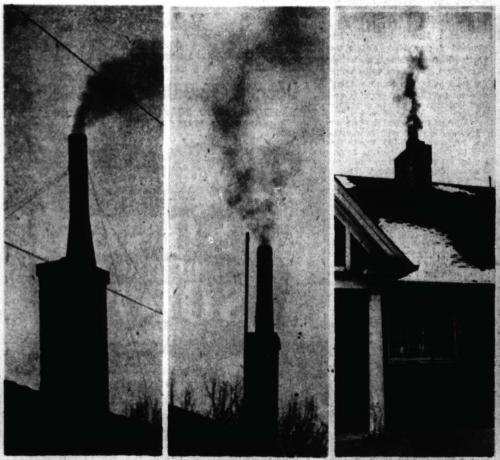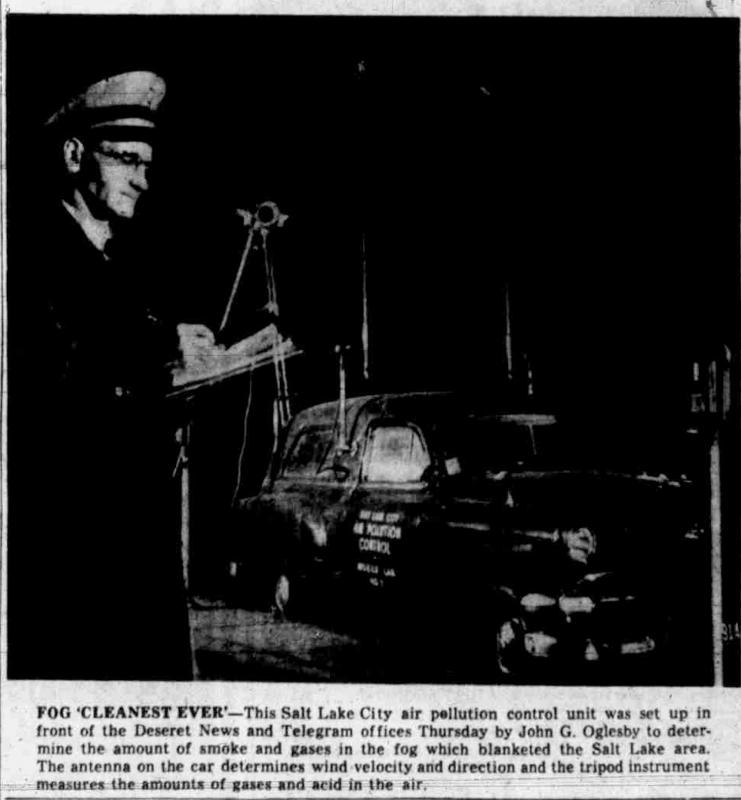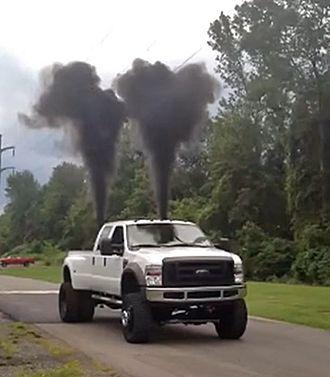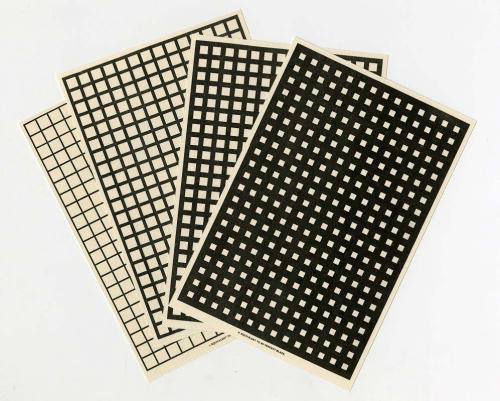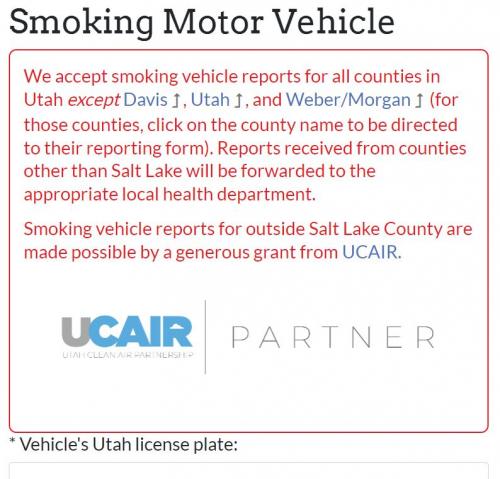Regulating Air Quality
THEN - Smoke Inspections
Salt Lake City enacted its first air quality regulations in the 1890s, imposing fines on buildings that emitted “dense smoke.” Also in that decade, the city decided that new industrial plants be built to the west of the Jordan River, believing the river would shield the city center from industrial pollution. A stricter ordinance went into effect in 1903, under which violators were to be arrested and prosecuted. And a federal court ruled in 1907 that smelters were legally responsible for the damage they caused to the harvests of nearby farms. As air pollution continued to worsen as the city grew, activists—many of them women—campaigned extensively for more effective air quality laws on the eve of World War I.
The war distracted attention from the air quality issue, but a new phase of air quality research and regulation began in the 1920s. An airplane donated by the Salt Lake Chamber of Commerce was used to study pollution, and a new force of smoke inspectors was employed to identify polluters. The smoke inspectors would surveil from the top of tall buildings during the day and using searchlights at night. But municipal funding for these efforts tapered off by the late-1920s. The focus on air quality receded for several years until 1936, when the Women’s Chamber of Commerce was formed to alleviate the smoke problem. They pressured the city to build a coal-processing plant that would extract the valuable byproducts (petroleum and natural gas) that were emitted as smoke when unprocessed coal was burned, and enact regulations requiring the use of the processed coal it produced. The city passed a new air quality program of education in inspection in 1941, but never built the plant advocated by the Women’s Chamber. Regulatory attention to the pollution issue was again distracted by the outbreak of World War II.
NOW - Utah Division of Air Quality
In the postwar years the air quality challenges assumed a different shape. By the early 1950s the economy was well on its way to transitioning from coal to natural gas. The primary source of air pollution then became—as it remains today—automobile emissions. In the decades since, the city, the state, and the federal government have introduced a variety of regulations and commissioned a multitude of scientific studies to better understand and combat the issue. The state took up the issue seriously in the 1960s; the legislature ordered a major study in 1962 and created the Air Conservation Committee within the State Department of Health a few years later, the first statewide regulatory agency devoted to air quality (which is today the Utah Division of Air Quality (DAQ)). The federal Environmental Protection Agency was created in the 1970s and established national air quality standards with which states were required to meet. Since the 1990s, Utah policy has focused primarily on adhering to federal air quality standards, incentivizing fuel-efficient vehicles, improving inspection systems, among many other programs.
Today the Utah Division of Air Quality operates with three branches: Permitting Branch, Planning Branch, and Compliance Branch. The DAQ Compliance Branch is largely responsible for regulating air quality by "ensuring industries and residents are complying with all federal and state air quality requirements." The Compliance branch completes inspections, audits, and takes action enforcing the Utah Clean Air Act for both Major Sources (large industrial pollution) and Minor Sources (air quality complaints and minor industries). DAQ Compliance Branch accepts air quality complaints, as well as issues residental open burn permits and other permits. The DAQ also has an Inversion Toolkit with guidance on how to monitor air quality, reduce emissions, and health advice during winter inversion.
The Utah Department of Environmental Quality (DEQ) also provides methods for citizens to report air quality violations. Vehicles that emit large amounts of smoke or exhaust can be reported. The practice of "rolling coal" is illegal in Utah and is a reportable offense. The Ringlemann scale, used to measure the visual opacity of air pollution is still used today.

